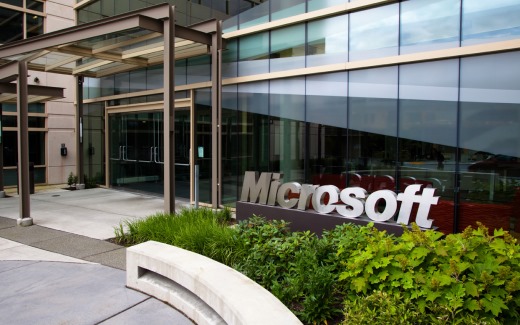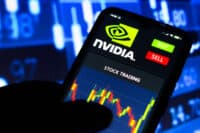Microsoft Corp. (NASDAQ: MSFT) surprised many investors in 2013 with an astonishing 44% return. The S&P 500 rose by 29.6% and the Dow Jones Industrial Average rose by 26.5%. Both major index readings were their highest closing bell prices ever at the end of 2013, which is not the case for Microsoft. 24/7 Wall St. has generated a bullish and bearish scenario for 2014 in each stock of the Dow and in major indexes, including Microsoft, to see what investors should expect ahead. Source: courtesy of Microsoft
Source: courtesy of Microsoft
Most Wall Street strategists are forecasting higher price targets for the stock market in 2014, but Microsoft rose by so much that it now trades above its consensus analyst price target. It also trades at about 13.6 times expected fiscal 2014 earnings estimates, and that is a projection of almost zero growth from 2013. Is it possible that the stock is now fairly valued?
To evaluate Microsoft, Google Inc. (NASDAQ: GOOG) and Apple Inc. (NASDAQ: AAPL) simply cannot be avoided. There are just too many overlaps and competitive threats from these other two companies that must be addressed.
Microsoft is in a unique situation because it is in the process of trying to get a new chief executive in the door to replace CEO Steve Ballmer. Despite the PC era turning into the era of smartphones and tablets, Microsoft still keeps generating billions of dollars from operating system sales. It also has many other efforts in technology, search, the cloud, video games and more. The macroeconomic picture matters of course, and better U.S. gross domestic product and the recovery of Europe and Asia may only help. The question is the trends working against its core software market.
Microsoft’s bullish case is that it still generates billions of dollars. It has an impressive 3% dividend yield, it can buy back endless amounts of stock and it can continue making niche acquisitions. The cloud services may also be a boost, as well as video games, search and other efforts. The highest analyst target is now $45, and Rick Sherlund of Nomura offered a scenario in which the stock could hit $45 or even $50. Now imagine how well things can go if Microsoft can turn its smartphone and tablet businesses into a success. Lastly, the new CEO could tighten up the company’s focus much more than Ballmer and Gates did.
The bearish case for Microsoft is of course the onslaught from Google virtually and Apple physically. This could rob Microsoft of search and software sales on one end, while the hardware trends toward smartphones and tablets continue to eat away at the core PC market. Another risk is that the tablet business goes way south, and where the smartphone effort is just one that no one wants to hear about. CEO transition is always a risk as well, because some CEO candidates just cannot make things happen once they get into the captain’s chair.
Google has the clear lead in core search, and Android smartphones are the global leader now. Apple has the cool hardware, but at a serious price premium to most Windows devices. Apple also just announced that its App Store hit $10 billion in 2013 revenues. The iPad seems to have a clear lead in tablets in the United States, but lower price points could put that up for grabs in 2014 or 2015.
Our take is that 2013 treated Microsoft so well that we just cannot envision a repeat in 2014. That being said, that does not mean that Microsoft has to fall. Its new CEO may be given a quarter or two to prove his or her worth, but everyone is going to be out backing or criticizing the new direction of leadership. Microsoft shares could rise 10% in 2014, or they could fall by the same amount.
Take This Retirement Quiz To Get Matched With A Financial Advisor (Sponsored)
Take the quiz below to get matched with a financial advisor today.
Each advisor has been vetted by SmartAsset and is held to a fiduciary standard to act in your best interests.
Here’s how it works:
1. Answer SmartAsset advisor match quiz
2. Review your pre-screened matches at your leisure. Check out the
advisors’ profiles.
3. Speak with advisors at no cost to you. Have an introductory call on the phone or introduction in person and choose whom to work with in the future
Take the retirement quiz right here.
Thank you for reading! Have some feedback for us?
Contact the 24/7 Wall St. editorial team.



